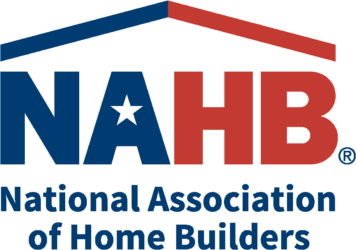During the third quarter of 2022, credit continued to become less available and generally more costly on loans for Acquisition, Development & Construction (AD&C) according to NAHB’s Survey on AD&C Financing.
To analyze credit availability, responses from the NAHB survey are used to construct a net easing index, similar to the net easing index based on the Federal Reserve’s survey of senior loan officers (SLOOS). In the third quarter of 2022, both the NAHB and Fed indices were negative, indicating tightening credit conditions. This was the third consecutive quarter during which indices from both surveys indicated tighter credit. Moreover, both indices were more negative in the third quarter than they had been in the second, and far more negative than they had been in the first. In the first quarter of the year, the NAHB net easing index stood at -2.3 before declining to -21.0 in the second quarter and -36.0 in the third. Similarly, the Fed net easing index was -4.7 in the first quarter of 2022, but subsequently fell to -48.4 in the second quarter and -57.6 in the third. In short, the tightening of credit conditions for builders and developers is becoming more widespread.

According to the NAHB survey, the most common ways in which lenders tightened in the third quarter were by increasing the interest rate on the loans (cited by 74 percent of the builders and developers who reported tighter credit conditions), reducing amount they are willing to lend (60 percent) and lowering the allowable Loan-to-Value or Loan-to-Cost ratio (46 percent).
Meanwhile, the average effective rate (based on rate of return to the lender over the assumed life of the loan taking both the contract interest rate and initial fee into account) increased on three of the four categories of loans tracked in the AD&C Survey: from 9.55 to 9.67 percent on loans for land development, from 8.48 to 9.95 percent on loans for speculative single-family construction, and from 8.63 to 10.76 percent on loans for pre-sold single-family construction.

These increases were due to increases in both the contract interest rate and the initial points charged on the loans. The average contract rate increased from 6.27 to 6.42 percent on loans for land development, from 5.39 to 6.16 percent on loans for speculative single-family construction, and from 5.24 to 5.85 percent on loans for pre-sold single-family construction. Similarly, average points increased from 0.90 to 0.93 percent on loans for land development, from 0.63 to 0.76 percent on loans speculative single-family construction, and from 0.59 to 0.89 percent on loans for pre-sold single-family construction.
On the fourth category of loans in the AD&C survey (for pure land acquisition) the average effective rate declined slightly, from 8.19 percent to 7.97 percent. Again, this was due to a combined effect of the contract rate and points on the loans moving in the same direction. The average contract rate on land acquisition loans declined from 6.16 to 6.09 percent, while the average points declined from 0.86 to 0.79 percent.
These generally worsening credit conditions are contributing to the weakness in builder confidence reported by NAHB earlier today. Additional detail on current credit conditions for builders and developers is available on NAHB’s AD&C Financing Survey web page.
Discover more from Eye On Housing
Subscribe to get the latest posts sent to your email.
